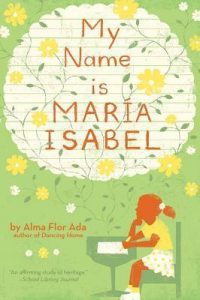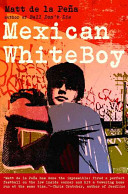
Miguel Guzman isn’t exactly looking forward to the summer now that his mother has agreed to let the Sword family—a father, his three daughters, and their dog—live with them while they decide whether or not to move to Vermont. Little does Miguel know his aunt has something up her sleeve that just may make this the best summer ever. With her usual flair for creativity and fun, Tía Lola decides to start a summer camp for Miguel, his little sister, and the three Sword girls, complete with magical swords, nighttime treasure hunts, campfires, barbecues, and an end-of-summer surprise! The warm and funny third book in the Tía Lola Stories is sure to delight young readers and leave them looking forward to their own summer fun!
See the review at WOW Review, Volume 5, Issue 3.







 A photograph, a box filled with toy horses, and a fractured memory are all that Maya has left of her mother. Now, in Grandmother’s house in California, she lives like a captive, until a shocking event changes everything. A world away, in Wyoming, a wild Paint horse, called Artemisia, runs free. In a land where mountain lions and wranglers pose an ever-present threat, Artemisia must protect her new foal, until a devastating act separates them from their bond. Maya’s and Artemisia’s lives will ultimately intertwine. And together, they hold the key to each other’s survival.
A photograph, a box filled with toy horses, and a fractured memory are all that Maya has left of her mother. Now, in Grandmother’s house in California, she lives like a captive, until a shocking event changes everything. A world away, in Wyoming, a wild Paint horse, called Artemisia, runs free. In a land where mountain lions and wranglers pose an ever-present threat, Artemisia must protect her new foal, until a devastating act separates them from their bond. Maya’s and Artemisia’s lives will ultimately intertwine. And together, they hold the key to each other’s survival.